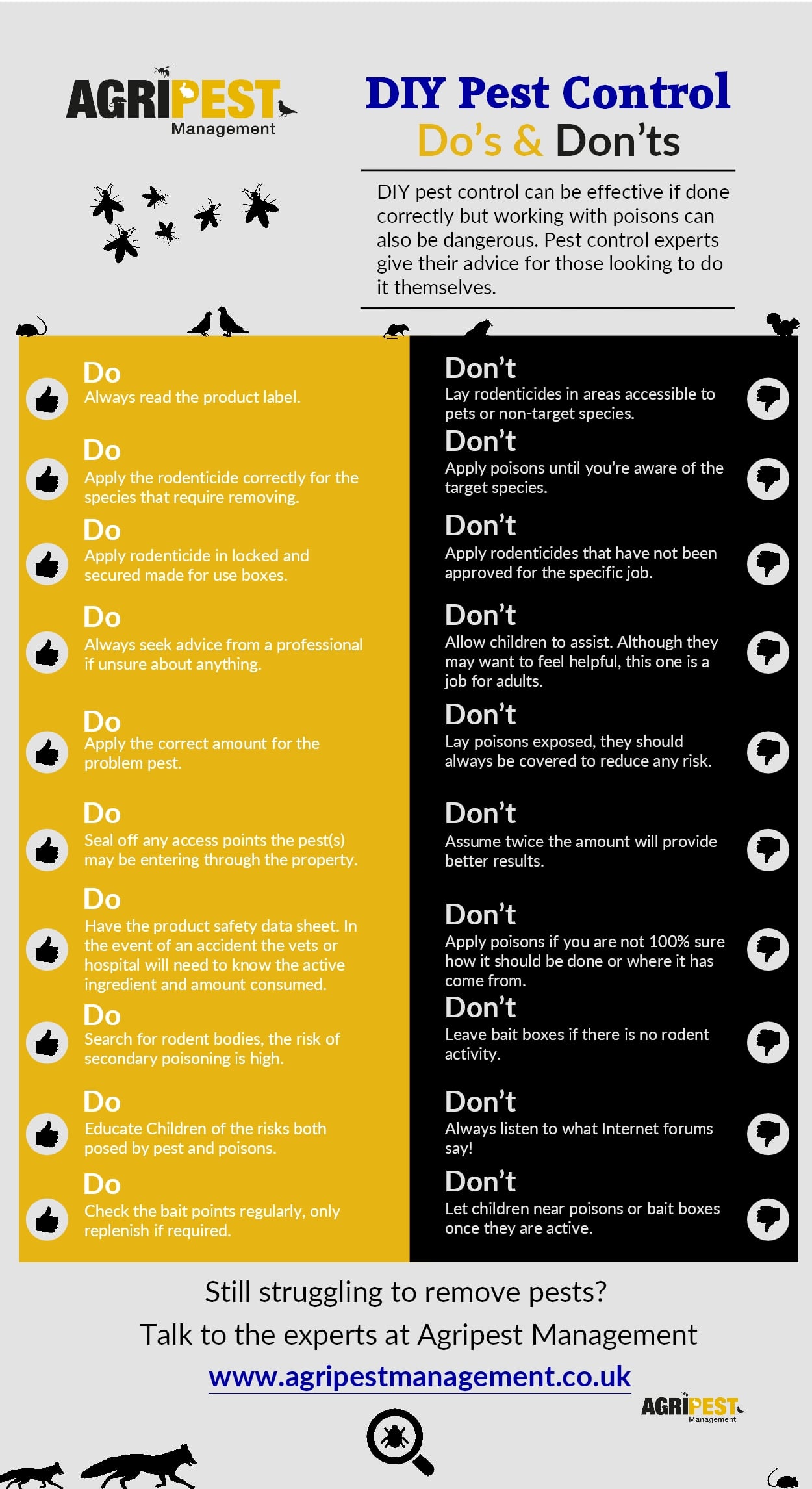The Role Of Bug Control In Food Safety And Health
The Role Of Bug Control In Food Safety And Health
Blog Article
Web Content Author-Duggan Bunn
Are you aware of the concealed risks that parasites pose to the safety and hygiene of your food? From Eco-friendly rodent control to insects, these unwanted site visitors can infect your active ingredients, surfaces, and storage space locations.
This short article discovers the vital role of parasite control in maintaining the greatest requirements of food security and health. Discover effective approaches and prevention procedures that will aid you safeguard your service, customers, and track record.
Don't allow parasites compromise the top quality of your food.
The Effect of Bugs on Food Security and Health
In your cooking area, pests can have a significant impact on food safety and hygiene. These unwanted guests, such as rats, insects, and cockroaches, can contaminate your food, surface areas, and tools with damaging germs, infections, and parasites. They can conveniently access your cupboard, closets, and even your fridge, leaving behind droppings, pee, and hair.
https://anotepad.com/notes/nkj5e594 can they spoil your food by chewing through packaging, yet they can also spread out conditions like Salmonella, E.coli, and Listeria. Picture preparing a meal for your household, uninformed that the ingredients you're using are already infected.
learn more to take prompt activity to avoid and manage parasites in your kitchen area. Regular cleansing, proper food storage space, and expert parasite control measures are vital to guarantee food safety and keep a sanitary atmosphere in your kitchen.
Effective Pest Control Strategies for the Food Sector
Applying efficient insect control strategies is crucial for maintaining food safety and health in the food market. By carrying out these methods, you can stop bugs from polluting the food and make certain that your items are risk-free for usage.
One reliable method is to consistently check and check your facility for signs of insect activity. This includes checking for droppings, nests, or any type of damages triggered by bugs.
It's additionally important to secure all access indicate protect against parasites from getting in the facility. Regular cleansing and hygiene are crucial, as pests are attracted to food deposit and spills.
Furthermore, appropriate waste monitoring is critical to stop the buildup of food waste that can bring in insects.
Keeping Health Standards Via Parasite Avoidance Steps
To maintain hygiene requirements, you have to frequently implement pest prevention steps. By taking positive actions to prevent insects from entering your food establishment, you can make certain the safety and security and cleanliness of your facilities. Below are some efficient bug prevention actions to think about:
- Seal all splits and crevices: Bugs can enter via even the tiniest openings. Consistently inspect and seal any type of gaps in doors, home windows, walls, and floorings to keep insects out.
- Appropriate waste management: Dispose of food waste quickly and firmly in sealed containers. This will lessen the attraction of bugs and avoid infestations.
- Normal cleaning and disinfecting: Keeping cleanliness in your facility is critical. Routinely tidy and sanitize all locations, paying special interest to locations where insects might conceal or breed.
- Execute a monitoring system: Frequently examine your premises for indications of insect task. Mount insect surveillance gadgets, such as traps or sensing units, to identify and deal with any prospective problems early.
Verdict
So keep in mind, when it concerns food security and health, parasite control plays an important function.
By applying efficient bug control strategies and safety nets, we can ensure the highest possible criteria of tidiness and safety and security in the food market.
Don't let bugs jeopardize the high quality of our food; let's stand together and safeguard our wellness and well-being.
